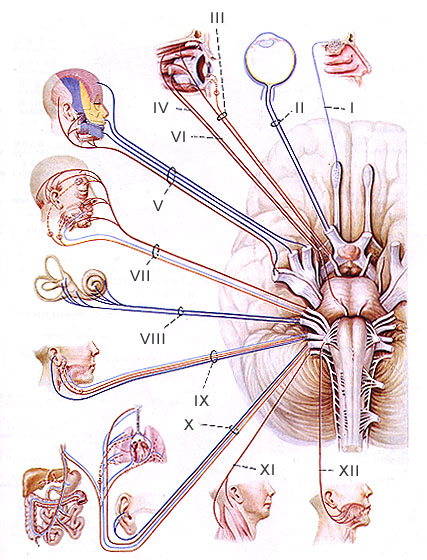In hormone receptor-positive, HER2-negative disease, endocrine therapy should be a clinician’s first choice. Single-agent chemotherapy and combination chemotherapy are also possible options. Chemotherapy and hormone therapy should not be given concomitantly.
For postmenopausal women with ER-positive:
Table 1. Available Endocrine Therapies
| Agent Class | Drugs Available |
|---|
| Anabolic steroids | nandrolone decanoate |
| AIs, third-generation, nonsteroidal | anastrozole; letrozole |
| AIs, third-generation, steroidal | exemestane |
| Estrogens | estrogens |
| ER downregulator | fulvestrant |
| Luteinizing hormone-releasing hormone analogues | goserelin; leuprorelin; triptorelin |
| Progestins | medroxyprogesterone acetate; megestrol acetate |
| Selective ER modulators | tamoxifen, toremifene |
Letrozole- oral non steroidal aromatase inhibitor
For postmenopausal women with ER-positive disease, several endocrine therapy options are considered standard. If AIs have not been used in the adjuvant setting, several studies have shown they are superior to other endocrine therapy, including tamoxifen. The third-generation AIs — letrozole, exemestane, and anastrozole — provided statistically significant survival benefits. Fulvestrant, an ER downregulator, is available in 2 doses: 250 mg or 500 mg. Recently published data from the phase 2 FIRST trial compared fulvestrant with anastrozole as first-line endocrine therapy for postmenopausal women with hormone receptor-positive advanced breast cancer. Specifically, they compared high-dose fulvestrant (500 mg intramuscularly on days 0, 14, and 28, and monthly thereafter) with anastrozole (1 mg per day). Median time to progression (TTP), the primary endpoint, was 23.4 months in the fulvestrant arm and 13.1 months in the anastrozole arm (HR, 0.66; 95% CI, 0.47-0.92; P = .01).
Bone-modifying agents beneficial in bone secondaries of breast CA (also caused by hormonal therapy):
1 of 3 bone-modifying agents:
Denosumab-targets RANKL(RANK ligand)-
a protein that acts as the primary signal for bone removal. In many bone loss conditions, RANKL overwhelms the body's natural defenses against bone destruction.-120 mg subcutaneously every 4 weeks,
intravenous (IV) pamidronate (90 mg over no less than 2 hours),
or zoledronic acid (4 mg over no less than 15 minutes every 3 to 4 weeks)
Other Agents:
Everolimus- inhibitor of Mammalian Target of Rapamycin (mTOR)- an immunosuppressant
Patients who become resistant to endocrine therapy have a poor prognosis. The targeted agent everolimus, which has just been approved, helps patients circumvent endocrine resistance. Resistance to endocrine therapy has been associated with the activation of the P13K-mTOR pathway, which, in turn, activates the ER. Everolimus inhibits the mTOR pathway.
Bevacizumab-monoclonal antibody-angiogenesis inhibitor-inhibits VEGF-A. The use of bevacizumab in breast cancer has been surrounded by controversy in recent years. In 2009, the EMA approved the combination of paclitaxel and bevacizumab in MBC, based on the E2100 clinical trial. This study showed a 5.5-month improvement in PFS for the combination over paclitaxel monotherapy. With longer follow-up of E2100, however, investigators found the PFS benefit did not translate into an OS benefit.
HER2-Positive Metastatic Breast Cancer
Trustuzumab- Monoclonal antibody that interfers with HER2/nu receptor
More recently, level 1 evidence has shown that clinicians should continue blockade of the HER2 pathway even after a patient progresses on an anti-HER2 agent. The German Breast Group enrolled 78 patients with HER2-positive breast cancer that had progressed during treatment with trastuzumab and randomized them to received capecitabine alone or in combination with trastuzumab.
Lapatinib-Dual tyrosine kinase inhibitor- Inhibitor of HER2/nu receptor + EGFR pathways
ESMO guidelines state that available evidence suggests continuing anti-HER2 therapy for as long as possible.
Capecitabine:
5-FU prodrug, converted enzymatically to 5-FU in tumour
Pertuzumab:
The first of its class in a line of agents called "HER dimerization inhibitors"
Table 2. Available Chemotherapy Agents
| Anthracycline-containing regimens | Doxorubicin or epirubicin monotherapy
Doxorubicin/cyclophosphamide or epirubicin/cyclophosphamide
Liposomal doxorubicin with or without cyclophosphamide
Fluorouracil/doxorubicin/cyclophosphamide or fluorouracil/epirubicin/cyclophosphamide |
| Taxane-containing regimens | Paclitaxel monotherapy
Docetaxel monotherapy Nab-paclitaxel
Anthracycline (doxorubicin or epirubicin)/taxane (paclitaxel or docetaxel)
Docetaxel/capecitabine
Paclitaxel/gemcitabine
Paclitaxel/vinorelbine
Paclitaxel/carboplatin |
| Newer cytotoxic regimens | Eribulin
Ixabepilone (not approved by EMA)
Cyclophosphamide/methotrexate/fluorouracil (CMF)
Platinum-based combinations (eg, cisplatin + 5-fluouracil; carboplatin + gemcitabine)
Capecitabine
Vinorelbine
Capecitabine + vinorelbine
Vinorelbine with or without gemcitabine
Oral cyclophosphamide with or without methotrexate
Eribulin
The recently approved chemotherapeutic eribulin mesylate is only approved for heavily pretreated women with locally recurrent or MBC. The label states it is approved for patients who have progressed after at least 2 chemotherapeutic regimens for advanced disease.
Brain Metastasis:
Brain metastases occur in 30% to 50% of patients with HER2-positive MBC. Patients with a small number of potentially resectable brain metastases should be treated with surgery or radiosurgery. Patients who respond to anti-HER2-based therapy and have controlled extracranial disease can live for several years after the diagnosis and treatment of brain metastases. Recently the phase 2 LANDSCAPE trial, investigating the combination of lapatinib and capecitabine for the treatment of previously untreated brain metastases from HER2-positive MBC, showed that 65.9% had an objective central nervous system (CNS) response.
Results from a phase 2 trial have shown that brain metastases can respond to a combination of lapatinib plus capecitabine
Rebiopsy:
National Comprehensive Cancer Network (NCCN), and others state that hormone receptor status and HER2 status should be re-evaluated at least once in a metastatic lesion.
NOTE- These are personal notes.They don't qualify be quoted.
|






